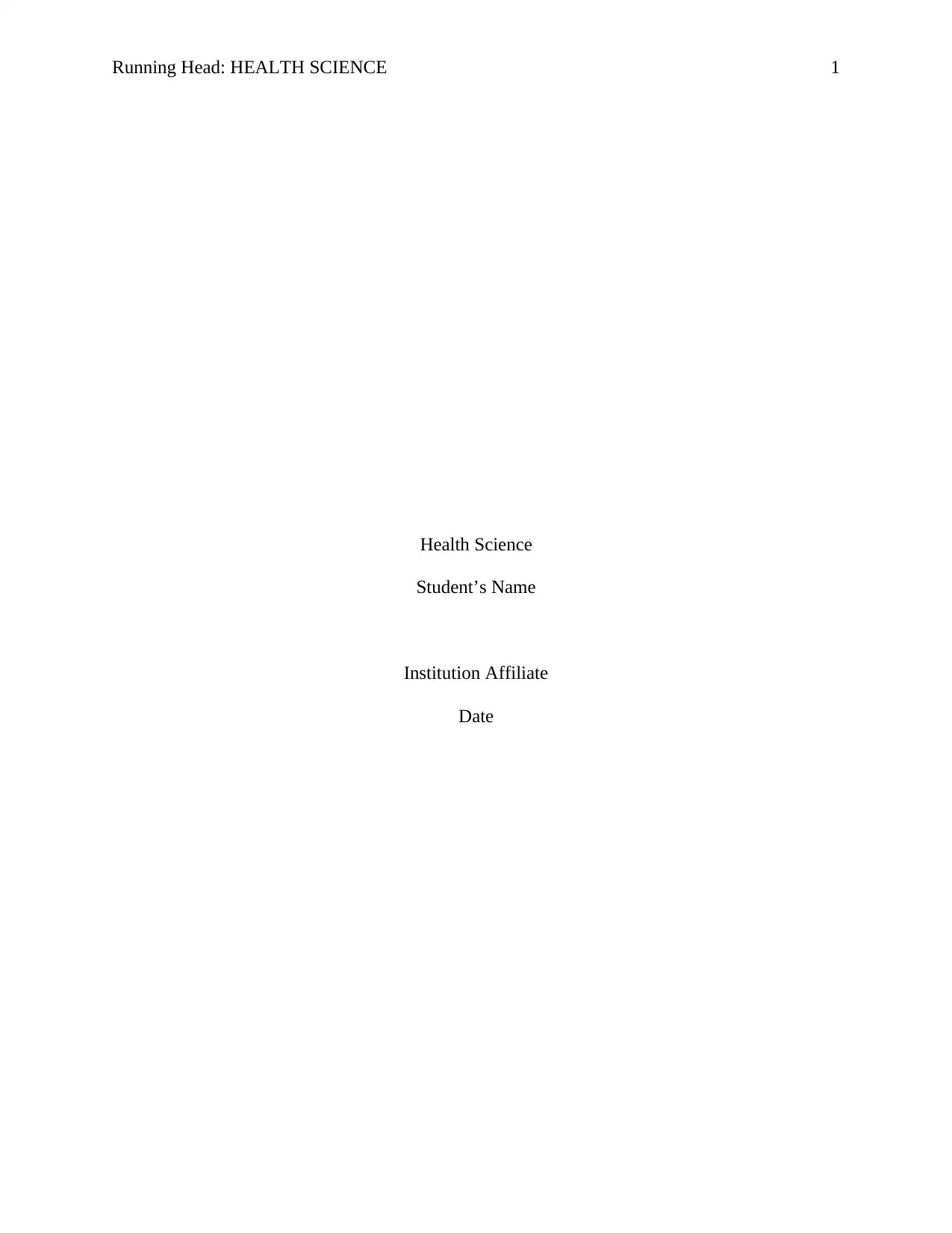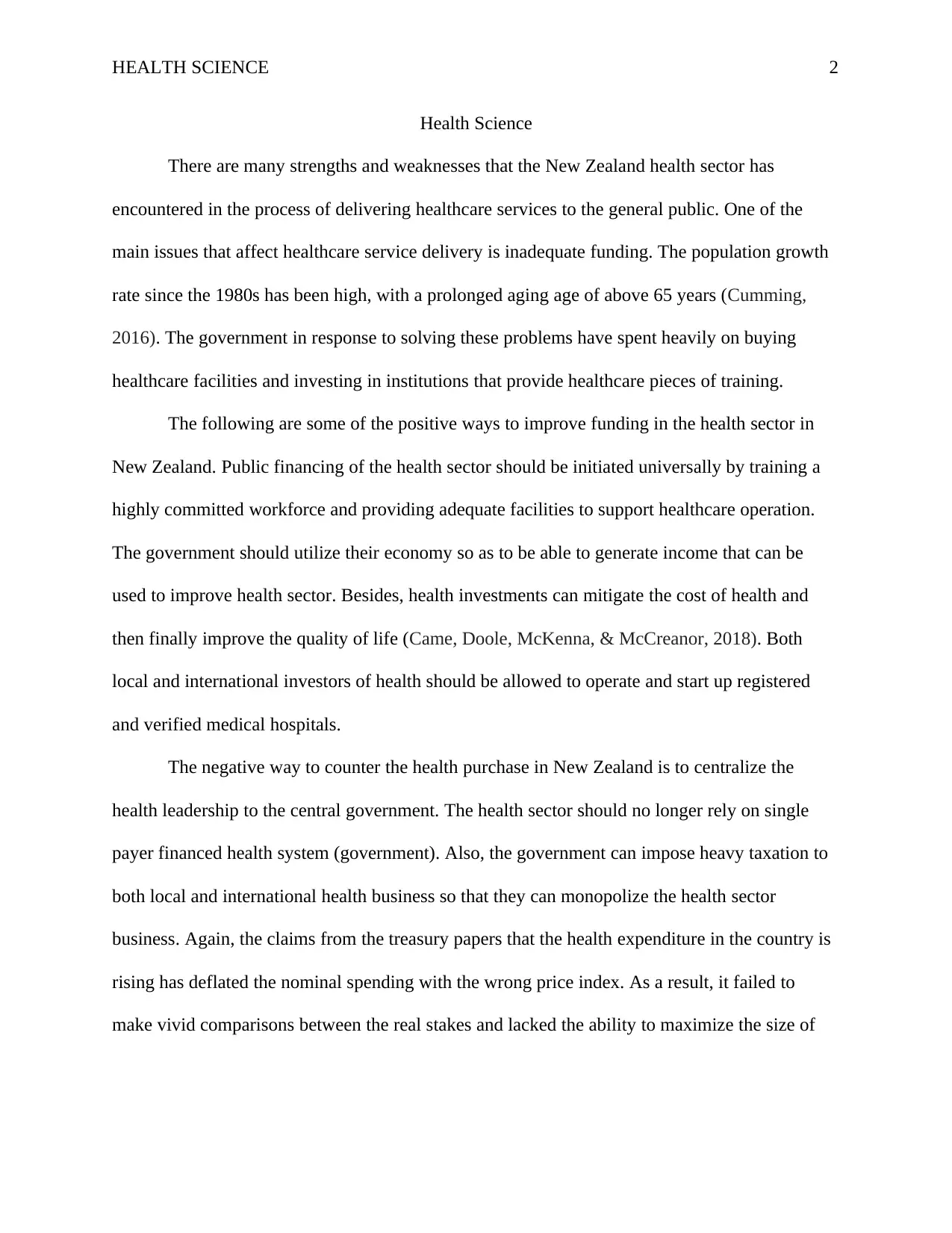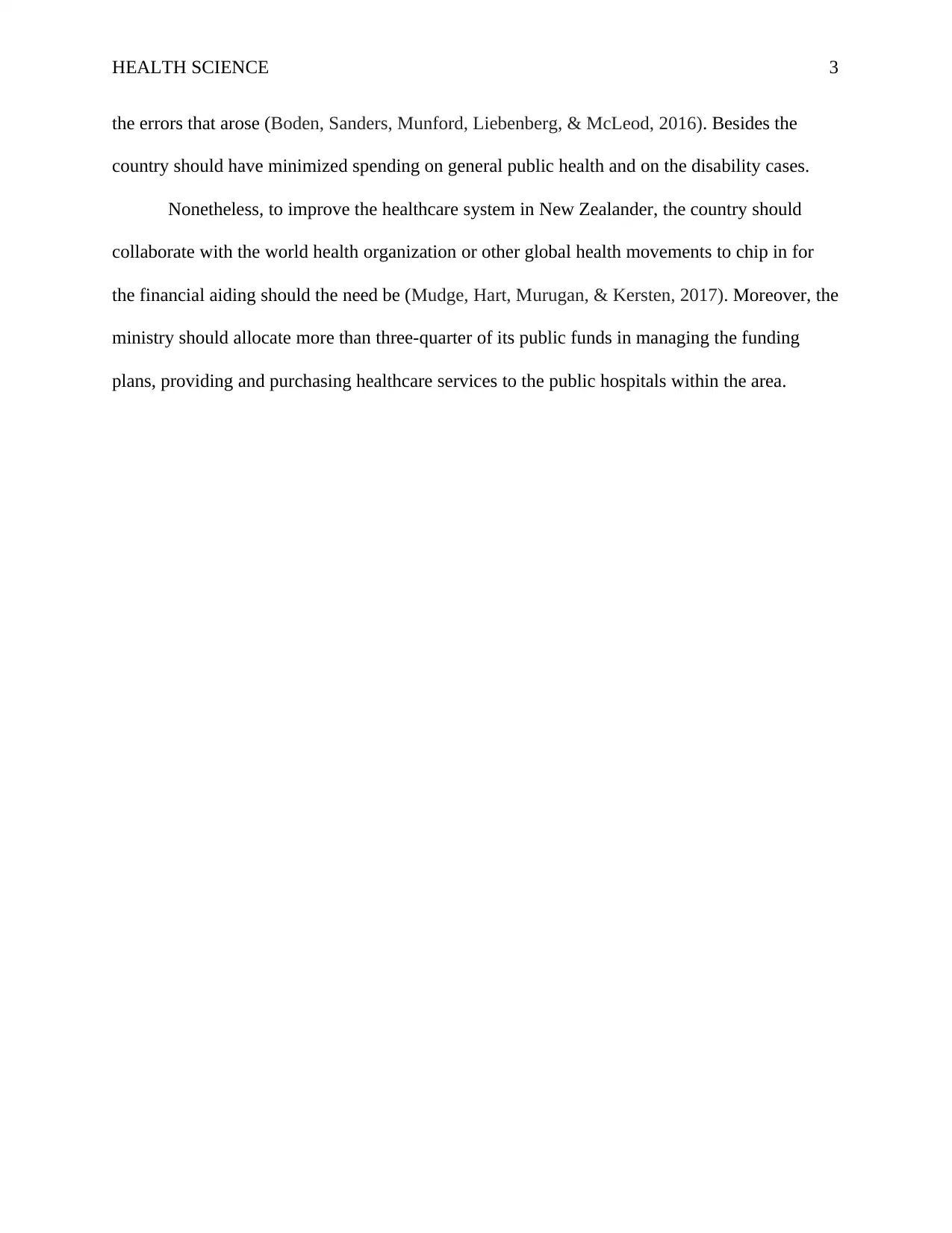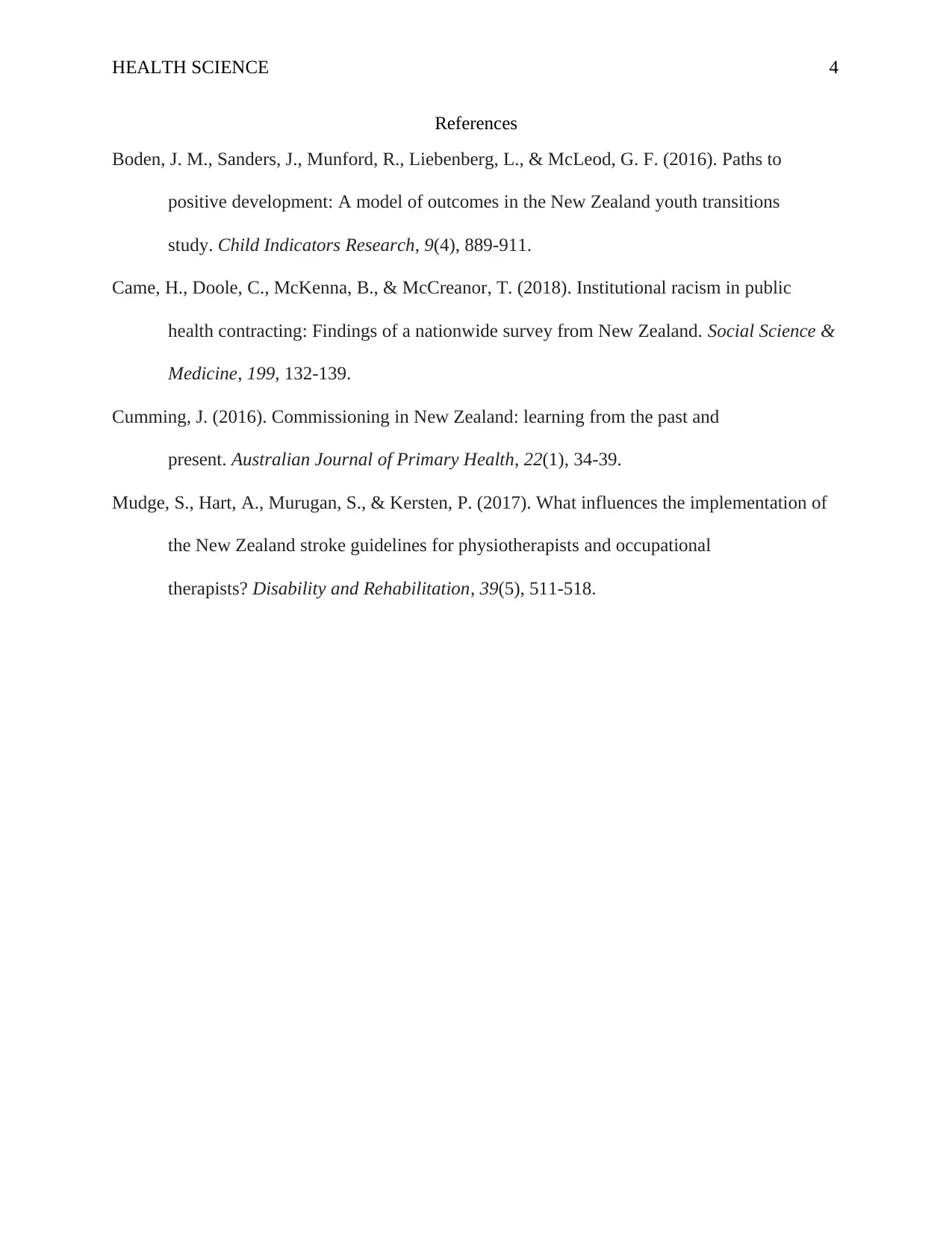Health Sector Funding Challenges and Solutions in New Zealand
VerifiedAdded on 2022/09/29
|4
|643
|23
Report
AI Summary
This report examines the complexities of healthcare funding within the New Zealand health sector. It identifies key challenges, such as inadequate funding and an aging population, while exploring both positive and negative strategies. The report suggests improvements through public financing, workforce training, and facility enhancements. It also addresses concerns about centralized leadership, taxation, and the accuracy of financial assessments. The author also suggests the need for collaboration with global health organizations to secure financial aid and advocates for strategic allocation of public funds to enhance healthcare services. References are provided to support the analysis.
1 out of 4





![[object Object]](/_next/static/media/star-bottom.7253800d.svg)